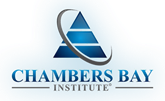
Healthy Conflict Drives Innovation
Begin with Purpose, Based on Trust
by Jim Solomon and Bruce LaRue, Ph.D.
“If everyone is thinking alike, then somebody’s not thinking.” – General George S. Patton, Jr.
High performing teams embrace conflict to drive innovation through meaningful collaboration. Pat Lencioni is the pioneer of the organizational health movement and a founder of The Table Group. In his book, Overcoming The Five Dysfunctions of a Team, he instinctively points out that “teams that engage in healthy conflict know that the only purpose is to produce the best possible solution in the shortest period of time. They discuss and resolve issues more quickly and completely than others, and they emerge from heated debates with no residual feelings or collateral damage, but with an eagerness and readiness to take on the next important issue.”
Often leaders fear creating unrest within their team, though best leaders encourage healthy disagreement to explore new perspectives. We’ve listened to leaders who boast that they have no conflict within their organization, then we learn that the organization is flat or failing. Mike Gore Chief Strategy Officer at Team TREK points out that “Contrary to what many believe, the absence of conflict is not a sign of harmony; it is a sign something is wrong. It is a sign that trust is low, concerns are not being voiced, ideas are not being shared, and people have disengaged. Over time the result of not being heard is always the same—resentment.”
According to Dave Ramsey, CEO of Ramsey Solutions, “Many leaders avoid conflict and end up holding their teams back. The key is allowing people to disagree without being disagreeable.” For conflict to be healthy, it must be centered on two factors – 1) a common purpose, based on trust and 2) focus on ideas not individuals.
Disagree, Not Disagreeable
Healthy conflict must be over ideas not about individuals. Teams that follow this practice find that a significant outcome is that they collectively learn to “see in new ways”. It improves listening and communications skills, develops deeper thinking, nurtures adaptability, leads to engagement and commitment, and challenges them to take time to research and develop ideas and positions of substance rather than responding based upon emotions. It lets the team work through their differences to achieve the best solutions.
For the most perceptive leaders and teams, it can help to identify gaps of what is not being said or is missing. Allowing your team to disagree, will change it from one that simply reacts or bases their perspectives on the ways of the past, to one that is eager to contribute, accepts feedback, and considers varied solutions to find the best one.
“As a leader, leaving room for disagreement lets you treat conflict as a fact-finding mission,” Matt Krukowski, VP of engineering at SevenFifty. He further explained how incorporating the idea of healthy disagreement throughout company culture eliminates the potential for problematic conflict and in fact increases his team’s productivity.
What Healthy Conflict Looks Like
Healthy conflict must start at the top with leaders “leaning into it” by modeling what “right” looks like, while creating a safe environment. “Dignity and respect” are a must, never to be negotiated. The approach is to be for the good of the team, never a “win or lose” mindset.
Leaders need to share and manage expectations by ensuring that everyone’s ideas are sought out, listened to, considered freely, and respected. It’s important they let their team know that those who don’t contribute will be a concern for the rest of the team – that silence is considered objectionable, almost a failing.
Teammates must take full responsibility for themselves during conflict, keeping the focus on the idea, not the person. Individuals must understand that they are to leave their personal emotions out of it, channeling their passion to achieve the best outcome for the organization.
Out of the “ring”, out of the conflict. Leave the discussion on the table when you leave the room or the virtual conference room. Use only key takeaways from the discussion to drive deeper thought and examination for follow up and follow through.
Teammates should be celebrated for their contributions. This will not only boost morale but will encourage members to engage openly and freely.
As for leaders, conflict for those who are weak or insecure will become quickly apparent. They will become defensive, with a feeling of threat for their authority, and will be closed to listening to varied perspectives. Best leaders will embed healthy conflict as a positive element of their organization’s culture and serve as its champion.
Begin With a Common Purpose
Providing your organization’s purpose makes it about just that, your organization, and not you the leader. This creates a pathway for your team to align with your azimuth, offering a reason for their work, while reducing ambiguity. It’s the spark to ignite others to follow your inspiration.
Time and again while working with leaders, we see that teams that have a clearly defined purpose, an understandable and relatable WHAT and WHY, excel in their mission. This can be measured in their productivity, is reflected by their low employee turn-over, and shows in high job satisfaction. People want to know from their leaders the direction they should be heading, yet want the opportunity to contribute to how best to get there.
The power of purpose can’t be understated. During a recent Craig Groeschel Leadership Podcast with Dave Ramsey, Craig related a story about one of Dave’s long time technology department staffers. When Craig met this employee and learned that this individual had been with Ramsey Solutions for more than 14 years, he asked what do you love about this place? Without hesitation, the tech employee responded that “What we do matters so much. And what I do contributes to it.” Clearly this employee understands the organization’s purpose! And feels that what he does has a positive impact.
Through leadership’s regular underscoring of their purpose, employees gain a sense that what they do contributes to the organization’s outcome. Dave uses this example often discussed at his leadership meetings: “you write a line of code here and you may have saved someone’s marriage. You may have contributed to getting them out of debt and changed the course of a family tree.”
This sense of purpose leads to the second component teams require to embrace healthy conflict – trust.
Based on Trust
Trust begins with your team having direction, and this must come from you, the leader. You must provide and reinforce this regularly by sharing and reinforcing your organization’s purpose – it’s WHAT and WHY. Don’t assume that everyone knows this – remind your team of your WHAT along with a compelling rationale for the WHY. Staying on azimuth will add to your credibility, consistency, and communications – key elements of your team’s foundation of trust.
Simone Maus, global consultant, striving to make the world of work more human at The Zone, suggests that “When we start with purpose we build trust, because we are making our intentions known to the people around us, to the people we lead and to ourselves.” Because there is no wrong when the entire intent is to make things right or best, a trusting relationship is nurtured within your team as they work together to resolve conflict.
Trust comes when team members feel safe. Safe knowing that they are encouraged to contribute or disagree without any repercussions and that presenting a new or different perspective is sought after. And that their feedback is not only welcome but expected.
Integrator Leader Reflections
- Do you embrace healthy conflict, or does it make you become defensive, with a feeling of threat for your authority?
- Do you and your team engage in healthy conflict to produce the best possible solution?
- Does your team emerge from heated debates with no residual feelings or collateral damage, but with an eagerness and readiness to take on the next important issue?

www.chambersbayinstitute.com ● leadership@chambersbayinstitute.com
© All Rights Reserved Chambers Bay Institute 2022
You must be logged in to post a comment.